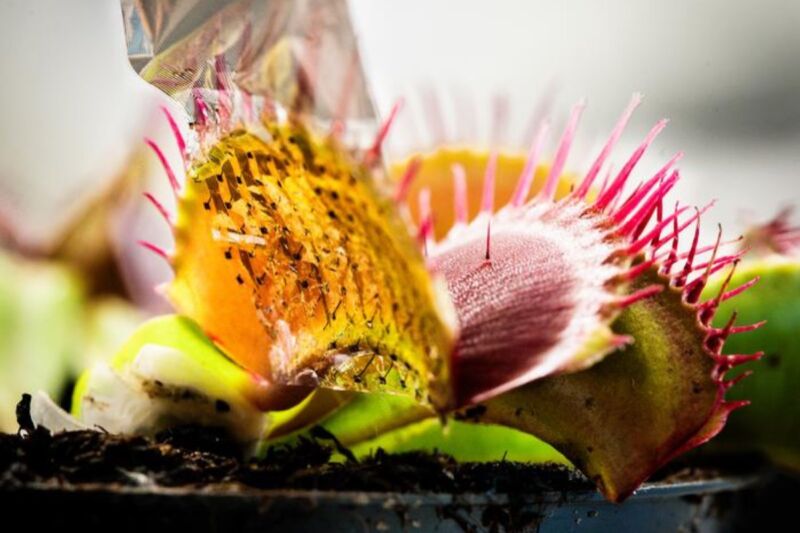Human beings and other animals send electrical signals via the central nervous system. The Venus flytrap, which lacks such a nervous system, also sends rapid electrical impulses, which are generated in response to touch or stress. It's how the plant traps its prey to feed. Now scientists have developed a bioelectronic device to better understand the Venus flytrap's complex signaling mechanism by mapping how those signals propagate, according to a recent paper published in the journal Science Advances.
“We can now say with certainty that the electrical signal originates in the sensory hairs of the Venus flytrap," said co-author Eleni Stavrinidou of Linköping University in Sweden. "With our technology, we can also see that the signal mainly spreads radially from the hair, without any clear direction."
As we've reported previously, the Venus flytrap attracts its prey with a pleasing fruity scent. When an insect lands on a leaf, it stimulates the highly sensitive trigger hairs that line the leaf. When the pressure becomes strong enough to bend those hairs, the plant will snap its leaves shut and trap the insect inside. Long cilia grab and hold the insect in place, much like fingers, as the plant begins to secrete digestive juices. The insect is digested slowly over five to 12 days, after which the trap reopens, releasing the dried-out husk of the insect into the wind.
In 2016, Rainer Hedrich, a biophysicist at Julius-Maximilians-Universität Würzburg in Bavaria, Germany, led the team who discovered that the Venus flytrap could actually "count" the number of times something touches its hair-lined leaves—an ability that helps the plant distinguish between the presence of prey and a small nut or stone, or even a dead insect. The plant detects the first "action potential" but doesn't snap shut right away, waiting until a second zap confirms the presence of actual prey, at which point the trap closes. But the Venus flytrap doesn't close all the way and produce digestive enzymes to consume the prey until the hairs are triggered three more times (for a total of five stimuli).

In 2020, Japanese scientists genetically altered a Venus flytrap to gain important clues about how the plant's short-term "memory" works. They introduced a gene for a calcium sensor protein called GCaMP6, which glows green whenever it binds to calcium. That green fluorescence allowed the team to visually track the changes in calcium concentrations in response to stimulating the plant's sensitive hairs with a needle. They concluded that the waxing and waning of calcium concentrations in the leaf cells really do seem to serve as a kind of short-term memory for the Venus flytrap, though precisely how calcium concentrations work with the plant's electrical network remains unclear.
However, a mutant Venus flytrap dubbed Dyscalculia (DYSC) does not close in response to two sensory stimuli, nor does it process its prey in response to additional stimuli. It has somehow "forgotten' how to count. Earlier this year, Hedrich and his team found that the mutation did not seem to affect either the action potential or the underlying calcium signal in the first two-count stage of the process. The action potentials fire, yet the trap doesn't snap shut, suggesting that the touch-activation of calcium signaling is being suppressed.



3175x175(CURRENT).thumb.jpg.b05acc060982b36f5891ba728e6d953c.jpg)


Recommended Comments
There are no comments to display.
Join the conversation
You can post now and register later. If you have an account, sign in now to post with your account.
Note: Your post will require moderator approval before it will be visible.